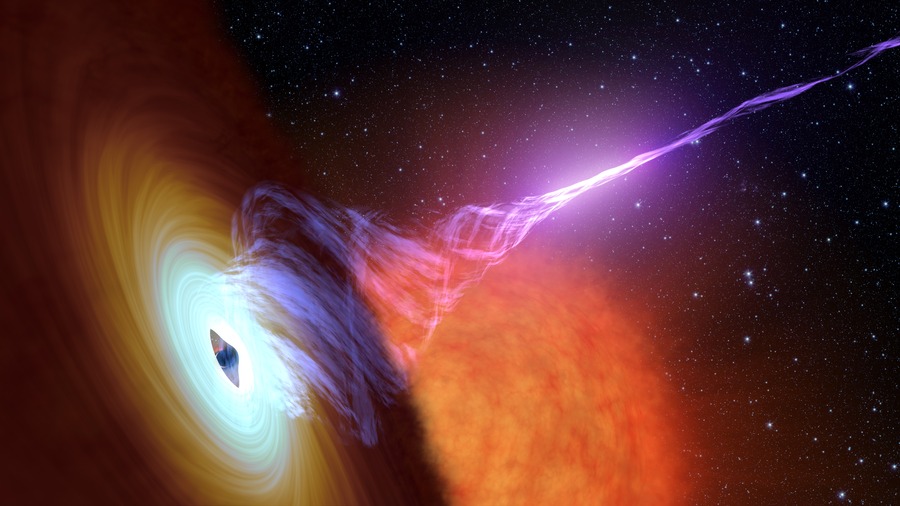
 Credit: NASA/JPL-Caltech
Credit: NASA/JPL-Caltech
The cow that Roared
Astronomers are fascinated by things that go burst in the night. So, they spend lots of time and resources scanning the sky looking for changes. Last June, such a search turned up a highly unusual event: an extremely powerful, fast-rising blast in the faint spiral arm of a distant galaxy. When this event was announced to the astronomical community, it was dubbed "AT2018cow" according to an agreed-upon naming protocol (which, for this burst, just happened to spell out the word "cow"). Followup observations with telecopes on the ground and in space (including the Neil Gehrels Swift observatory, the NuSTAR hard X-ray imaging observatory and the NICER X-ray timing facility on the International Space Station) showed unusual emission from this source stretching from radio to X-ray energies. Astronomers are still unclear what caused the outburst. Some possibilities, like a merger of highly magnetized neutron stars, or the merger of two white dwarf stars, can probably be ruled out based on the observed amount of hydrogen and helium seen in the blast. Other models, like the tidal disruption of a star by a black hole, are possible. One unusual explanation that astronomers think is plausible is that this event represents a "failed supernova". This happens when a very massive star runs out of nuclear fuel and then, instead of immediately exploding as a supernova, suffers a direct collapse into a massive black hole. When this happens, accreting material should form a spiralling disk around the black hole, and some rapidly spinning material near the black hole can escape as a narrow, relativistic jet of high energy particles, similar to what's shown in the illustration above. The astrophysical jury's still out however, and observational and theoretical studies of this strange event are ongoing. See the Astronomical Telegrams if you'd like to follow along in the adventure.
Published: November 19, 2018
<
HEA Dictionary ● Archive
● Search HEAPOW
● Other Languages
● HEAPOW on Facebook
● Download all Images
● Education ● HEAD
>

Each week the HEASARC
brings you new, exciting and beautiful images from X-ray and Gamma ray
astronomy. Check back each week and be sure to check out the HEAPOW archive!
Page Author: Dr. Michael F. Corcoran
Last modified Tuesday, 27-Feb-2024 10:15:12 EST


